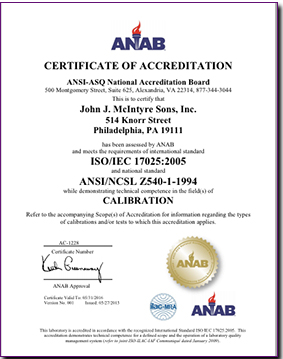CERTIFICATE OF ACCREDITATION
This guidance document is intended to assist both ANAB assessors and ANAB customers, including applicant laboratories, in drafting scopes of accreditation. This guidance is intended to clarify both ILAC guidance documents and ANAB requirements, while helping to standardize formats across the range of potential accredited tests and calibrations in the sphere of ISO/IEC 17025 accredited operations.
CERTIFICATE OF ACCREDITATION
While a laboratory’s scope of accreditation is issued as an ANAB document and published on the ANAB website, it is also understood to be a marketing document for the accredited laboratory. As such, the entries on the scope of accreditation need to be well understood by potential customers and users of the accredited laboratory.It is hoped that this document will outline minimum requirements and set frameworks within which a laboratory may exercise some flexibility in its scope of accreditation, while still allowing ANAB to meet all requirements set forth in ISO/IEC 17011 and by the international regional co-operations of which ANAB maintains membership.
Click this link to view and print pdf of certificate
It is clear to those who work with electrical calibration scopes that many complicated listings are found. It is the responsibility of the lab to decide which and how many ranges will be listed on the scope for each parameter. Since an uncertainty budget is required for each range and, in most cases, the more ranges listed the better the CMC in each range, the lab must balance the time needed for maintenance of these budgets with their desired CMC. Whenever possible, the units of measure should be the same for both the ranges and CMC values.
For electrical parameters (Electromagnetic – DC/Low Frequency and RF/Microwave, Time & Frequency, and Fiber Optics) as well as Thermodynamic, ANAB policy is that parameters will be listed in terms of the discipline (for example, “AC Voltage” and not the type of unit calibrated For most Electromagnetic-DC/Low Frequency parameters, drafters should use the standard terms on the scope of accreditation of “Source” and “Measure” whenever possible alongside voltage, current, resistance, power, etc.
For non-electrical calibration parameters, in most cases ANAB follows the generally accepted method of listing specific types of units under test (for example “calipers”) instead of types of measurements, as in the electrical parameters. Many ANAB scopes of accreditation contain a listing under Dimensional Calibration for “linear measurement”. These listings should to be moved to Dimensional Testing on an attrition basis and a separate listing used based on the type of equipment calibrated (for example, gage blocks, rulers, optical comparators, etc). These listings will be witnessed separately during full assessments.

